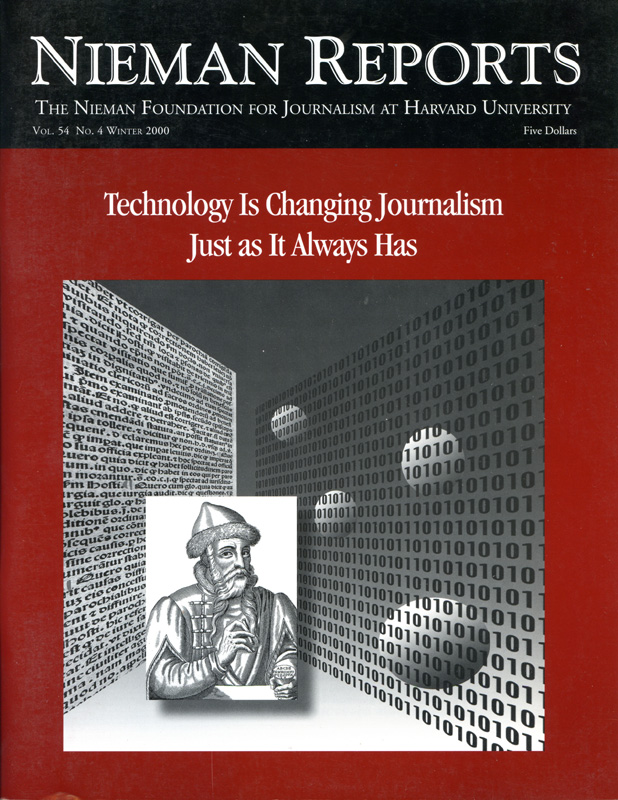… A number of Web sites now make it very easy for activists to create e-mail campaigns quickly and Web petitions for little or no money. And many of these RELATED ARTICLE
"Interactivity—Via E-Mail—Is Just What Journalism Needs"
- Tom Regansites are optimized for quick-starts on late-breaking issues, making them ideal for instant controversies like the impeachment of a president, the deportation of Elian Gonzalez, or a contested presidential election.
The wide circulation of “media lists,” with personal e-mail addresses of prominent newspaper editors and television news directors, has extended the edges of the revolution directly into the media’s e-mail in-boxes.
Michael Cooke, editor in chief of the Chicago Sun-Times, has watched the number of e-mails he receives “balloon” since shortly after Election Day. On Monday, he received about 1,450 emails, most of them urging him to oppose any “re-votes” in Florida. At least that’s what Cooke said, based on some sampling.
“Basically, I just delete them,” he said. “I scroll through the list looking for my boss’s name. If I don’t see his name in the ‘from’ box, I don’t even look at it.
“This is the first time I’ve been spammed like this, and it’s annoying. Now instead of going out to lunch, I just sit there deleting e-mails.”
The [Boston] Globe’s editor, Matthew V. Storin, reports a similar deluge. Between Friday afternoon and Monday evening, he received 2,193 emails, the vast majority related to the voting in Florida. Later, he gave an update: Between 11 p.m. Monday and 10:40 a.m. yesterday he received 310 emails.…
"Interactivity—Via E-Mail—Is Just What Journalism Needs"
- Tom Regansites are optimized for quick-starts on late-breaking issues, making them ideal for instant controversies like the impeachment of a president, the deportation of Elian Gonzalez, or a contested presidential election.
The wide circulation of “media lists,” with personal e-mail addresses of prominent newspaper editors and television news directors, has extended the edges of the revolution directly into the media’s e-mail in-boxes.
Michael Cooke, editor in chief of the Chicago Sun-Times, has watched the number of e-mails he receives “balloon” since shortly after Election Day. On Monday, he received about 1,450 emails, most of them urging him to oppose any “re-votes” in Florida. At least that’s what Cooke said, based on some sampling.
“Basically, I just delete them,” he said. “I scroll through the list looking for my boss’s name. If I don’t see his name in the ‘from’ box, I don’t even look at it.
“This is the first time I’ve been spammed like this, and it’s annoying. Now instead of going out to lunch, I just sit there deleting e-mails.”
The [Boston] Globe’s editor, Matthew V. Storin, reports a similar deluge. Between Friday afternoon and Monday evening, he received 2,193 emails, the vast majority related to the voting in Florida. Later, he gave an update: Between 11 p.m. Monday and 10:40 a.m. yesterday he received 310 emails.…



